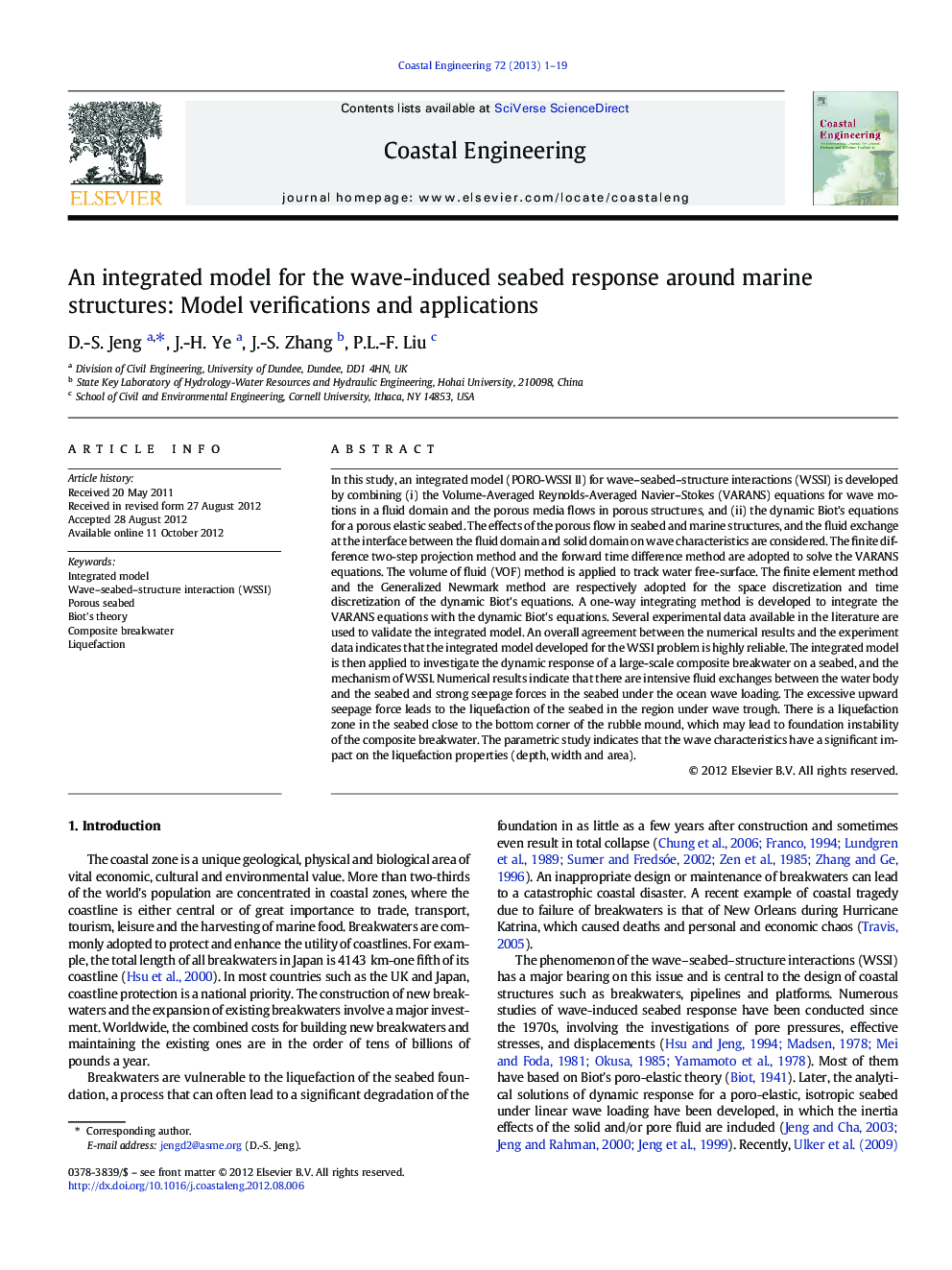| کد مقاله | کد نشریه | سال انتشار | مقاله انگلیسی | نسخه تمام متن |
|---|---|---|---|---|
| 1720895 | 1520382 | 2013 | 19 صفحه PDF | دانلود رایگان |

In this study, an integrated model (PORO-WSSI II) for wave–seabed–structure interactions (WSSI) is developed by combining (i) the Volume-Averaged Reynolds-Averaged Navier–Stokes (VARANS) equations for wave motions in a fluid domain and the porous media flows in porous structures, and (ii) the dynamic Biot's equations for a porous elastic seabed. The effects of the porous flow in seabed and marine structures, and the fluid exchange at the interface between the fluid domain and solid domain on wave characteristics are considered. The finite difference two-step projection method and the forward time difference method are adopted to solve the VARANS equations. The volume of fluid (VOF) method is applied to track water free-surface. The finite element method and the Generalized Newmark method are respectively adopted for the space discretization and time discretization of the dynamic Biot's equations. A one-way integrating method is developed to integrate the VARANS equations with the dynamic Biot's equations. Several experimental data available in the literature are used to validate the integrated model. An overall agreement between the numerical results and the experiment data indicates that the integrated model developed for the WSSI problem is highly reliable. The integrated model is then applied to investigate the dynamic response of a large-scale composite breakwater on a seabed, and the mechanism of WSSI. Numerical results indicate that there are intensive fluid exchanges between the water body and the seabed and strong seepage forces in the seabed under the ocean wave loading. The excessive upward seepage force leads to the liquefaction of the seabed in the region under wave trough. There is a liquefaction zone in the seabed close to the bottom corner of the rubble mound, which may lead to foundation instability of the composite breakwater. The parametric study indicates that the wave characteristics have a significant impact on the liquefaction properties (depth, width and area).
► We proposed an integrated model for wave–seabed–structure interactions.
► Pre-consolidation is considered in the new model, which is important for prediction of liquefaction.
► Numerical results show the applicability of Biot's dynamic poro-elastic model in the rubble mound.
Journal: Coastal Engineering - Volume 72, February 2013, Pages 1–19